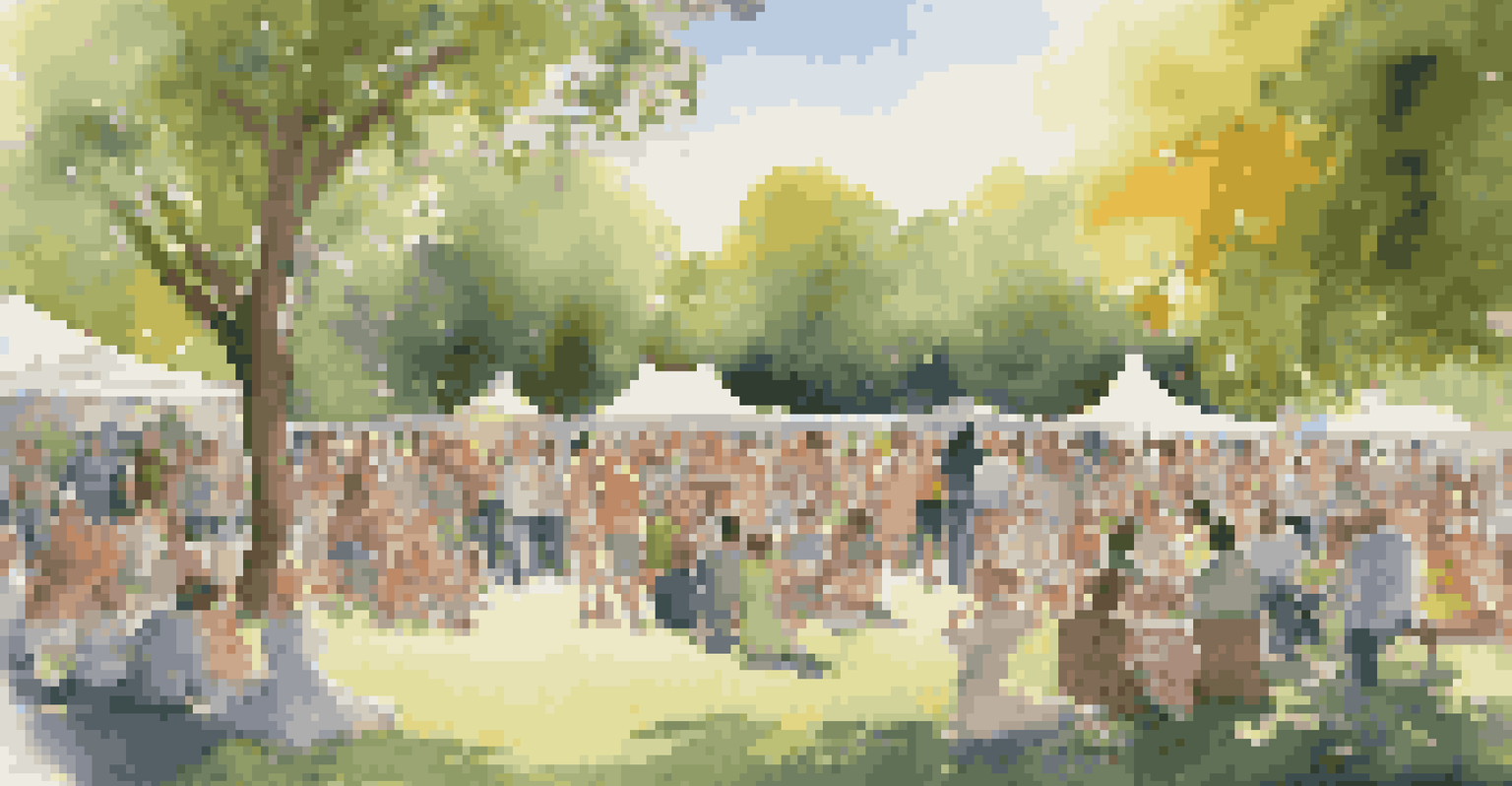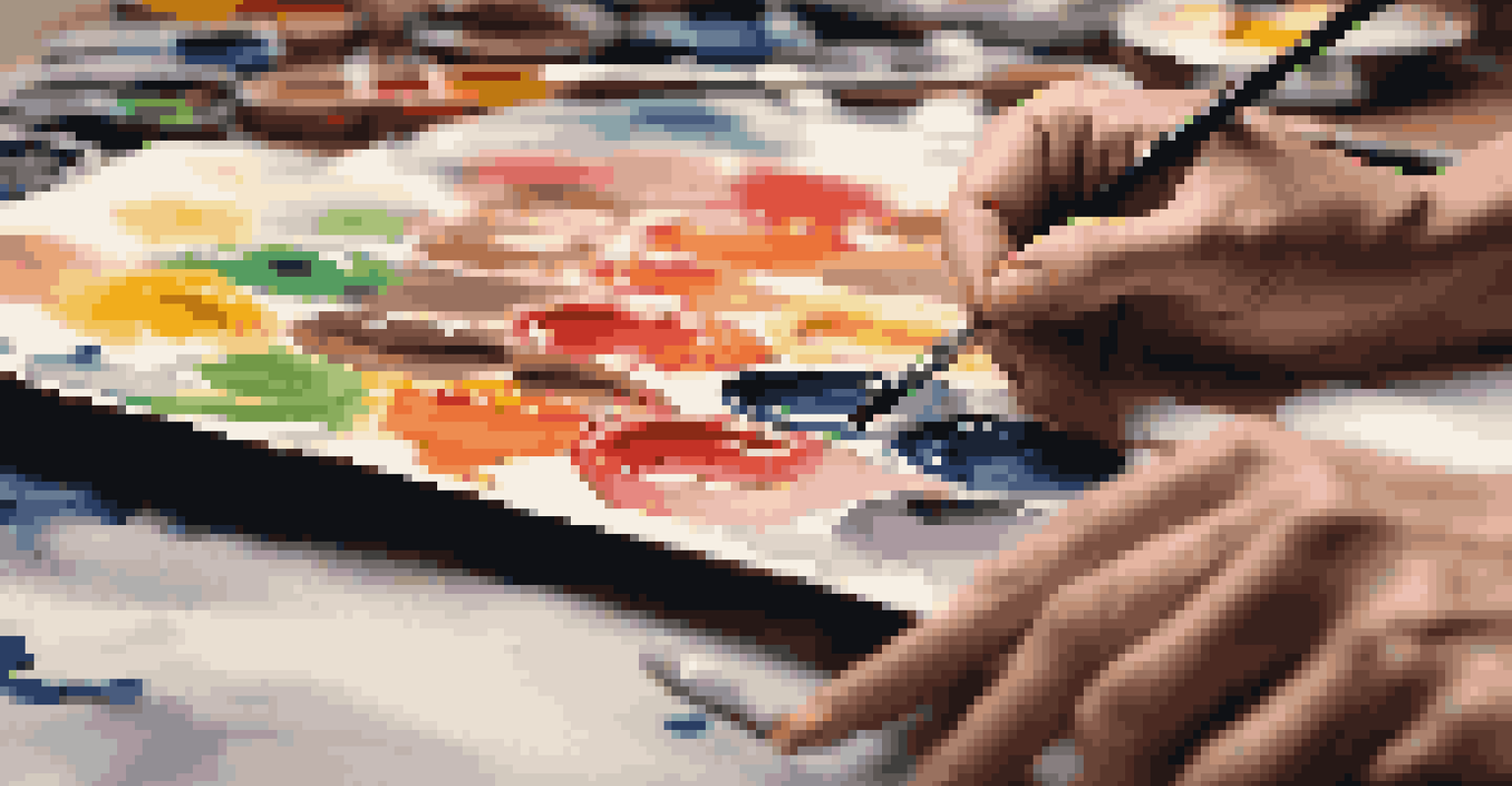Impact Investing in the Arts: Creating Cultural Value

Understanding Impact Investing in the Arts
Impact investing is a strategy that seeks to generate social and environmental benefits alongside financial returns. In the arts, this means supporting creative projects that not only provide economic value but also enrich cultural landscapes. By channeling funds into arts initiatives, investors can help nurture creativity and innovation within communities.
The arts are not a luxury; they are a necessity for our economy, our communities, and our spirits.
For instance, consider an investor who funds a local theater company. This investment not only supports the arts but also brings people together, fosters community engagement, and enhances local culture. The ripple effects of such investments can lead to increased tourism and local business growth, illustrating the dual benefits of impact investing.
Ultimately, understanding the intersection of finance and culture is crucial. It enables investors to make informed decisions that align with their values, while also contributing to a thriving arts ecosystem.
The Role of Arts in Economic Development
The arts contribute significantly to economic development by creating jobs, attracting tourism, and enhancing community identity. Cities known for their vibrant arts scenes often experience higher rates of economic growth, as they draw in visitors and new residents alike. This economic value is a key selling point for impact investors looking to make a difference.

For example, a city that invests in public art installations may see an increase in foot traffic, benefiting local businesses and fostering a sense of pride among residents. This investment not only beautifies the area but also stimulates the local economy, showcasing the powerful connection between arts and commerce.
Impact Investing Fuels Community Growth
Investing in the arts not only nurtures creativity but also drives economic development and community engagement.
Thus, when investors support arts initiatives, they are not just investing in creativity; they are also investing in the economic vitality of the community, creating a win-win situation for all stakeholders involved.
Fostering Community Engagement through Arts Investments
Impact investing in the arts is a powerful catalyst for community engagement. By funding projects that encourage participation, investors help create spaces where people can come together, share experiences, and build relationships. This sense of community is invaluable, especially in today’s increasingly fragmented society.
Investing in the arts is investing in the community and in the future.
Take, for example, a community mural project funded through impact investing. It not only beautifies a neighborhood but also invites residents to collaborate, fostering a sense of ownership and pride. When people engage in artistic projects, they develop a deeper connection to their environment and each other.
Ultimately, investing in the arts can transform communities, turning them into vibrant hubs of creativity and collaboration, which is essential for social cohesion and well-being.
Cultivating Diversity and Inclusion in the Arts
Impact investing plays a crucial role in promoting diversity and inclusion within the arts. By directing funds towards underrepresented artists and cultural organizations, investors can help ensure that a wide range of voices and perspectives are heard. This diversity enriches the cultural fabric of society and fosters understanding among different communities.
For instance, consider a fund that specifically supports minority artists. By providing resources and opportunities for these artists to showcase their work, the fund not only elevates their voices but also encourages a more inclusive dialogue within the art world. This approach creates a richer, more diverse cultural landscape.
Diversity Enriches the Arts Landscape
Supporting underrepresented artists through impact investing fosters a richer cultural dialogue and promotes inclusivity.
In this way, impact investing becomes a tool for social change, helping to break down barriers and create a more equitable arts ecosystem that reflects the multifaceted nature of society.
Measuring the Impact of Arts Investments
Measuring the impact of investments in the arts can be challenging but is essential for demonstrating value. Investors must assess not only financial returns but also the social and cultural outcomes of their investments. This holistic approach ensures that the full benefits of arts funding are recognized.
For example, metrics might include community engagement levels, attendance at art events, and the economic impact on local businesses. By collecting and analyzing this data, investors can gain insights into the effectiveness of their contributions and make informed decisions moving forward.
In essence, effective measurement helps articulate the true value of impact investing in the arts, showcasing its potential to drive positive change within communities.
Challenges and Opportunities in Arts Impact Investing
While the potential for impact investing in the arts is immense, challenges remain. Many investors may hesitate to fund projects that don’t guarantee immediate financial returns, which can limit opportunities for innovative artistic endeavors. However, these challenges also present unique opportunities for creative solutions.
For instance, establishing partnerships between investors, artists, and local governments can help mitigate risks and create more sustainable funding models. By working collaboratively, stakeholders can develop projects that meet both artistic and financial goals, ultimately benefiting everyone involved.
Measuring Arts Investment Success
Assessing both financial and social outcomes is crucial for demonstrating the true value of investments in the arts.
Through these innovative approaches, impact investing can overcome barriers, paving the way for a thriving arts sector that contributes to cultural vitality and economic growth.
The Future of Impact Investing in the Arts
The future of impact investing in the arts looks promising, as more investors recognize the cultural and social value of their contributions. As awareness grows, we can expect to see increased funding for diverse and innovative arts initiatives that foster community engagement and drive economic development. This shift represents a significant evolution in how we view and support the arts.
Moreover, as technology continues to advance, new platforms for funding and collaboration will emerge, making it easier for investors to connect with artists and organizations. Crowdfunding, for example, allows individuals to contribute to specific projects, democratizing the funding process and broadening participation in the arts.

Ultimately, the future holds exciting possibilities for impact investing in the arts, promising to create a more vibrant, inclusive, and culturally rich society.